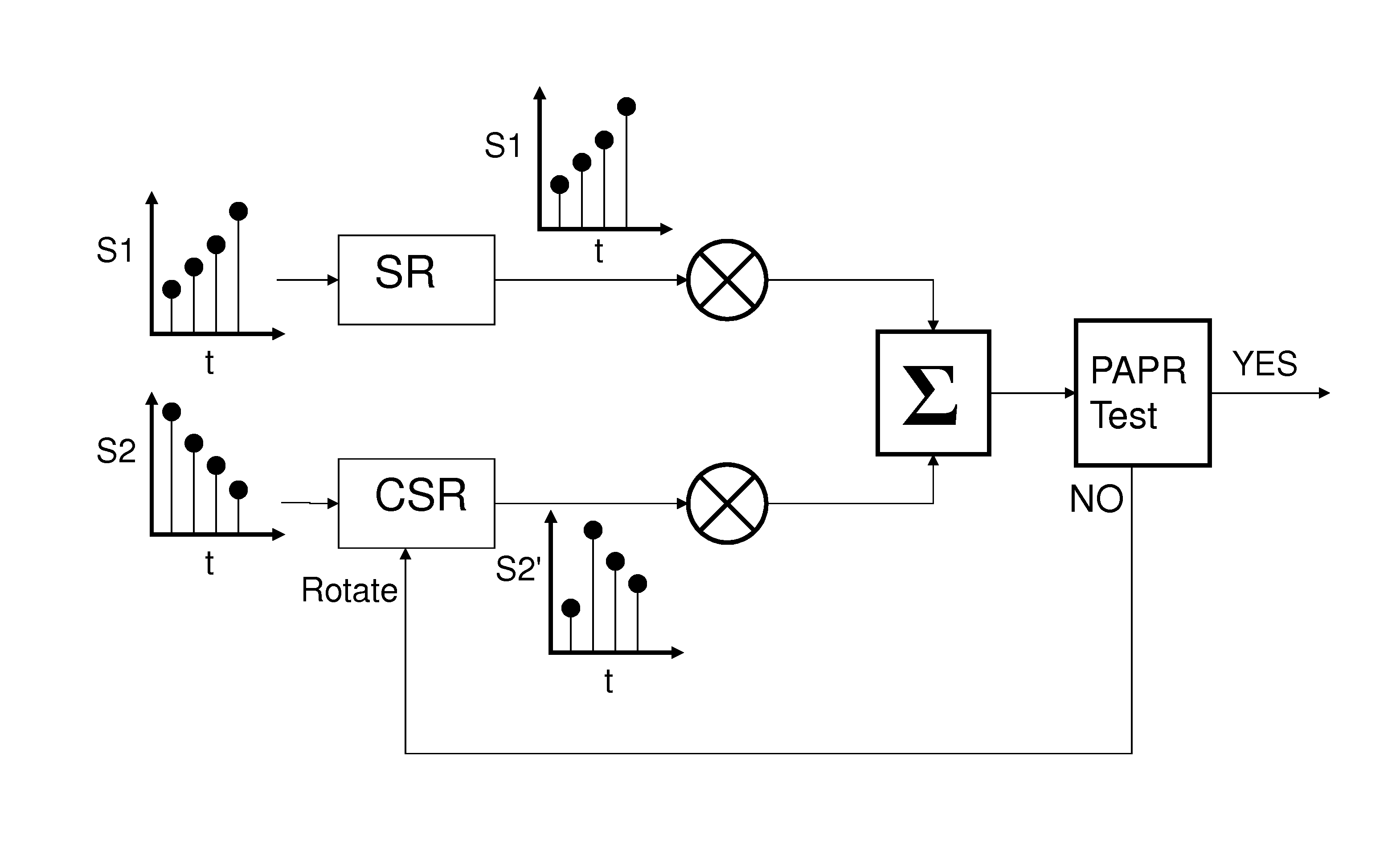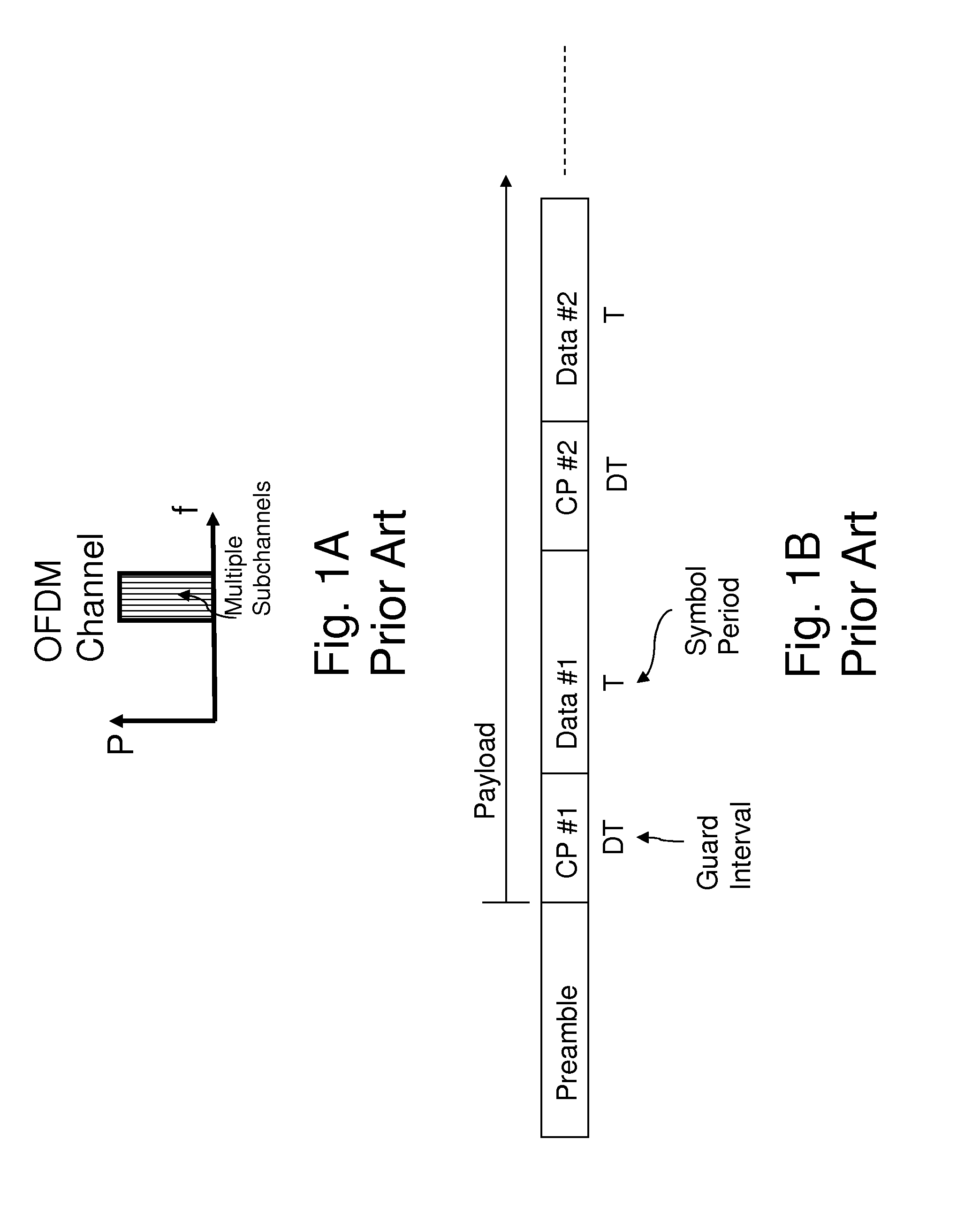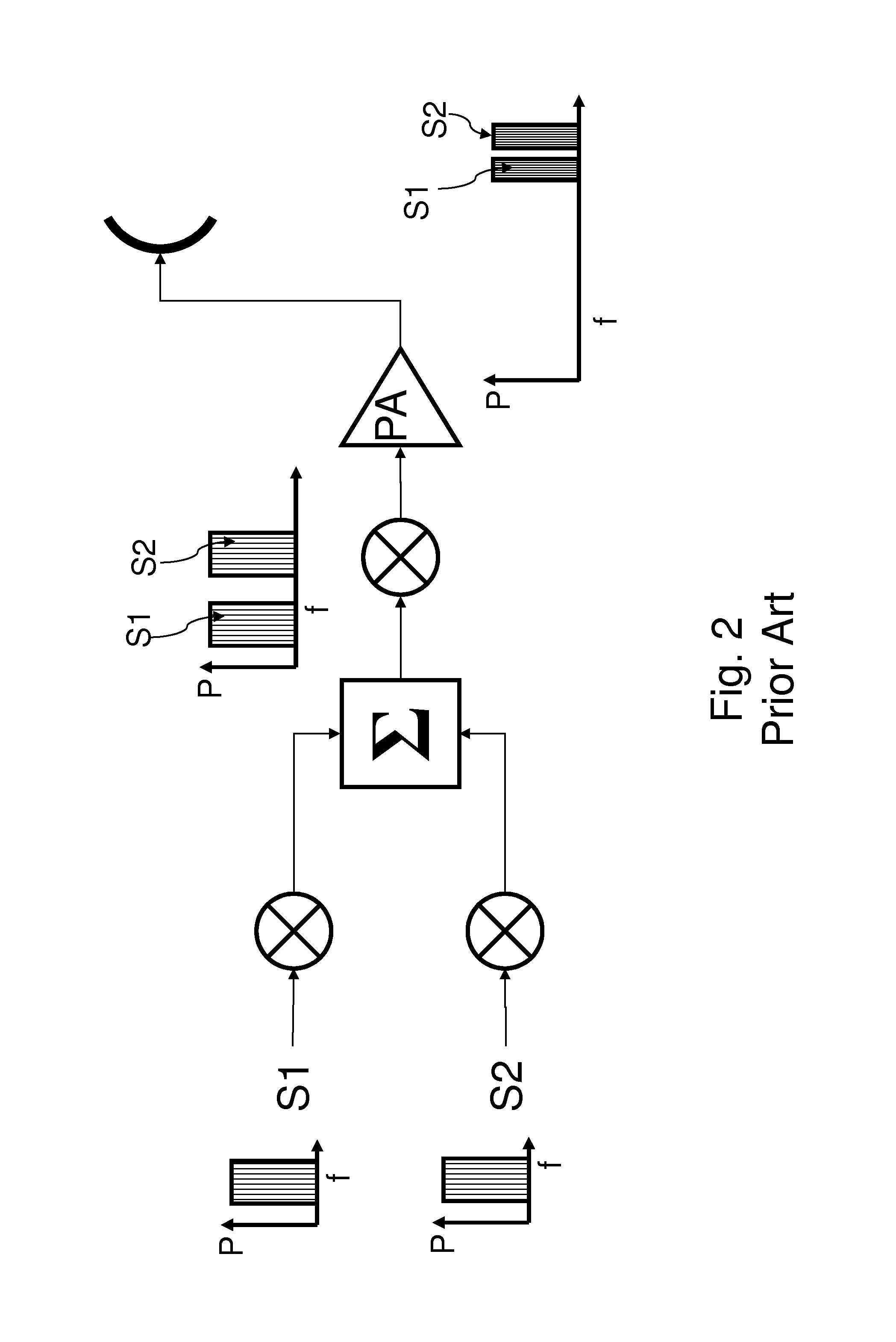System and Method for Controlling Combined Radio Signals
a combined signal and radio signal technology, applied in the field of control of combined signals, can solve the problems of low average efficiency of large radio-frequency power amplifiers, limited benefit of initial uncoordinated efforts to modify the input of dm signals, etc., and achieves low error probability, improved performance, and low error probability
- Summary
- Abstract
- Description
- Claims
- Application Information
AI Technical Summary
Benefits of technology
Problems solved by technology
Method used
Image
Examples
Embodiment Construction
[0154]OFDM channels are comprised of many sub-channels, each of which is a narrow-band signal (FIGS. 1A and 1B). An OFDM channel itself has a time-varying envelope, and may exhibit a substantial PAPR, typically 9-10 dB. However, if two separate similar OFDM channels are combined, the resulting signal will exhibit PAPR of 12-13 dB, for a gain of 3 dB. This is unacceptably large, since it would require a power amplifier with 4 times the capacity to transmit a combined signal that averages only 2 times larger.
[0155]A preferred embodiment therefore provides a PAPR reduction method which reduces the PAPR of a two OFDM channel combined signal from 12-13 dB back down to the 9-10 dB of the original components. This ˜3 dB reduction in PAPR is preferably accomplished without degradation of the signal, and without the need to transmit any special side information that the receiver would need to recover the OFDM symbols. Further, the algorithm is simple enough that it can be implemented in any ...
PUM
 Login to View More
Login to View More Abstract
Description
Claims
Application Information
 Login to View More
Login to View More - R&D
- Intellectual Property
- Life Sciences
- Materials
- Tech Scout
- Unparalleled Data Quality
- Higher Quality Content
- 60% Fewer Hallucinations
Browse by: Latest US Patents, China's latest patents, Technical Efficacy Thesaurus, Application Domain, Technology Topic, Popular Technical Reports.
© 2025 PatSnap. All rights reserved.Legal|Privacy policy|Modern Slavery Act Transparency Statement|Sitemap|About US| Contact US: help@patsnap.com



